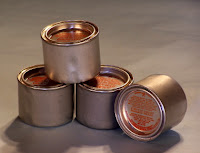Before you can even consider building a fire you must be aware of the areas fire safety regulations. During the drier parts of the year a lot of camping areas restrict fires to avoid potential forest fires. These restrictions can range from keeping fires enclosed to no fires at all. If you are in a situation where it is an emergency and you need a fire but are unsure as to whether or not fires are permitted your best bet is to make your own fire pit.
The first thing you need is a good spot to build your fire. Avoid areas with low hanging trees and dead branches. You don't want to end up setting a tree's canopy on fire. Also, clear away and debris on the ground. Give yourself a five to ten foot radius to work with. Next, find some rocks, green wood, sand, or anything that won't burn to build your fire pit out of. You should first dig out a shallow hole so that your embers have a wind break. If you have sand available use it to line your pit. Then, surround your pit with rocks or whatever you have available so that the embers stay contained.
Next, you'll want to gather wood for your fire. And lots of it. There are three different classifications of wood that you will need for your fire. Tinder, kindling, and fuel. Tinder is not limited to wood you can use anything small and flammable with a lot of surface area. Dried grass, drier lint, birds nests, and small bundles of twigs work great. For kindling you will need small sticks and twigs. You don't want to use anything that is bigger than a pencil in diameter. Gather about two ball caps full of kindling. Fuel is anything that is bigger than kindling that you have available to burn. You will need enough of this to last for however long you wish to keep your fire burning. You should gather this by the arm full. One armful of wood will last you anywhere from 20 minutes to and your depending on what kind of wood you are using a d a number of other factors including humidity and the wind. When you think you have enough fuel, double the amount you have. Keep you fuel just close enough to the fire that you can access it, if it is wet it will dry out, and it won't catch fire.
Building a fire may seem a bit rudimentary but there is an actual process to it. There are different types of fires for different occasions. For example, a teepee fire is used for lots of flames and is good for smoke signals. A log cabin fire is good for cooking because it creates good coals and is low to the ground.
Teepee
A teepee fire is very simple to build. Start with kindling and build it into a teepee shape ( duh, right?). Next layer on bigger sticks until you have your teepee at the size you desire. Next, prepare your tinder bundle. Depending on the wind direction you need to create an opening in which to place your tinder bundle. If the wind is coming from the west make your opening on the east. This is to prevent the spark from going out. You then place your to for bundle inside of your teepee and light it. As the flames build add more and more small kindling to it until the larger sticks surrounding your fire catch. As they burn they will weaken and collapse to the middle so you will need to add new fuel accordingly.Log Cabin
A log cabin fire is typically used for cooking. You basically stack your kindling like Lincoln logs until it is about six- eight inches high. Your tinder bundle goes in the middle. Once it is lit it must be fed until the "walls" of your log cabin catch. Then, you just stack fuel on it as needed. If you do plan to cook on it use a few thick pieces of wood across the top that will take a while to burn.Lean-to
A lean too is very quick and primitive. You just take a log and lean small sticks all across it and put the tinder bundle beneath them.When extinguishing a fire you must be sure to put all of it out. Unless of course you are going to use it again and you plan to monitor it. If you use water you want to make a sort of soup. If you use sand or dirt pile it on until you don't see smoke any more. To make sure the fire is out run your hand just over the top of it and if you don't feel heat it's out. Remember to leave the area the way you found it. Disperse any unused wood and kick around the leaves so you don't leave a bare patch of land.
Some tips for starting your fire
In a previous post I talked about tree sap and its uses in a survival situation. Adding it to your tinder bundle can help you out a lot when getting a fire started.If you have lighter fluid or another flammable liquid DO NOT add it to a burning fire. Add it before you even light a match. It is extremely dangerous to add a flammable liquid to a burning fire.
Have some way of edge guiding you fire near by. A fire extinguisher, a bucket of water, or just some loose dirt will work well.
Always be careful with any fire starter and be wary of your surroundings. In the words of smoky the bear, "Only you can prevent wild fires."
























